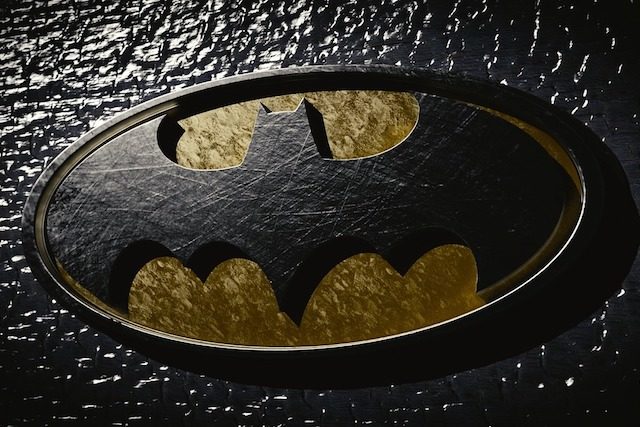For most of the world, the metric system does a good job of measuring weights and distances. Some countries still struggle with imperial measures, but there are people who like to measure their height based on the length of the foot of a king who died in England hundreds of years ago, as the story goes.
No matter which method you use, there are common units of measurement like miles or kilometers, but there are also much more obscure units of measurement that measure things you never even knew about. Let us tell you about ten units of measurement you've never heard of.
10. Smut

In 2011, internet users found confusion when Google Earth allowed users to measure distances with it. It was listed between nautical miles and degrees in a drop-down menu of measures, with no explanation. Few knew what it was, and it inspired blog posts and a little research from the curious.
Smoot was named after Oliver Smoot. It measures Smoot's height, which is 5 feet 7 inches or 170 cm. In 1958, Mr. Smoot was working at MIT and pledged to form a fraternity there. As part of the ritual humiliation that comes with pledging a fraternity, Smoot had to do something stupid. He and the other pledgers were taken to a bridge and told that its length had to be measured, but one of them had to be a ruler. That ruler was Smoot, so each of them who could span the bridge was one smoot long.
Smoot lay down on the bridge and someone marked the top of his head with chalk. He stood up and lay down on the chalk mark and they measured again and so on. The bridge ended up being 364.4 smoots long plus an ear, so that took a while.
9. A cigarette butt is an old way of measuring wine.

You may have heard someone casually refer to a large amount of something as an “ass.” For example, if you walked into a room and saw 100 cats, you might say, “That’s a lot of cats.” This sounds like a sanitized but semi-dirty way of referring to a lot. But it’s not. The butt is the real measure.
A hogshead is equal to two barrels, which is as useless as saying “one perch,” but at least it’s colorful. A hogshead is a barrel, and you can buy them for whiskey right now if you want. One barrel is 250 liters, or 66 gallons. That means a barrel is 500 liters, or 132 gallons. That means a load of butt is a lot. Science has backed that up.
In this case, "butt" doesn't mean the buttocks we think of. It's a very old word that came into English via Italian and French, where it originally meant "boot." The Italian word boote is still used to refer to wine.
Another funny thing about butts and barrels is that they are not always the same size. For example, while one source sells a barrel for 66 gallons, others list it for 54 gallons. This should be 108 gallons, but in the US it is 126 gallons. Now you know why no one uses it as a measurement.
8. Slug - unit of mass

Slugs aren't just slimy creatures that live under dry logs, they're also units of measurement. A slug is a unit of mass, weighing in at about 32.2 pounds, or 32.17 at sea level. What do you measure with slugs? You'll need to study physics for that.
A pound is a measure of force, not mass, which is confusing outside of physics. We use pounds to represent weight because weight measures the force of gravity. A pound is the force required to accelerate a single bullet at one foot per second squared. This is something you never need to know if you don’t already know it.
7. The word "mega-death" refers to the number of nuclear deaths

Have you ever heard of the 80s metal band Megadeath? Their name is, well, metal. Very metal. So metal that probably few people have ever wondered where it came from, because it sounds like a complicated word that any 80s metalhead would have come up with after a night of beers with his mates. But it’s not! Megadeath is not a made-up band name, it’s a unit of measurement that, by definition, is now the most metal unit of measurement ever.
When you're a person who has to predict the effects of nuclear wars, you come up with some weird business jargon, and that's what happened here. A megadeath is a unit of measurement used to describe the deaths in millions of people following a potential nuclear blast. So if Chicago had a population of 2.6 million people, and it was destroyed by a nuclear strike, then the death toll would be 2.6 megadeaths.
Now you might be asking yourself why someone would use this incredibly ridiculous term to minimize the death toll from a horrible atrocity, and at the same time you might be able to answer it.
6. Quil - a measure of surreality

People tend to overuse the word surreal to describe almost anything that isn't completely mundane. Traveling is surreal, finding a job is surreal, meeting a celebrity is surreal. In general terms, the word simply means something strange or bizarre, but more correctly it should refer to something that seems separate from reality, like a dream. Surreal things are not rational.
Since surrealism is a quality that can be attributed to a thing, someone came up with a unit of measurement for surrealism. This seems appropriate since, as mentioned, people often call very unsurreal things surreal. How do you tell the difference between boring surreal and really, really surreal? Use Quill.
Cuils aren't technically real forms of surreality measurement, since they're all theoretical things anyway. The creation of Cuil is part of an absurdist take on how bad search engines are. A Cuil is one level of abstraction from reality, so each Cuil is another level of absurdity compared to what should be normal.
Cuil was a search engine that had been around since 2008. It indexed 120 billion web pages and was supposed to be a competitor to Google. It lasted until 2010, which is impressive considering how bad it was. This is where Cuil's measurement came into play, because Cuil's search returned such meaningless and irrelevant results that it became a joke, so absurd that it was surreal. How far from what you wanted to see could Cuil go? And so a humorous form of measurement was born, giving birth to Cuil's theory, which you can read about if you like really weird things.
5. A noggin is half a pint or a quarter of a pint.

If you're the kind of person who likes a drink but is also very interested in how much you drink, you might know about a head. A head is a unit of measurement that's roughly equal to half a pint, except when it isn't. It was a quarter pint for a while, and then they improved it. It's the same as a gill. None of that is confusing, right?
A head is also equal to 142 cubic centimeters, which is about 0.6 cups. That's also 4.8 ounces, which is a little over three servings. Honestly, it's hard to say anyone measured with their head.
4. Poronkusema is how far a deer can walk before it needs to pee.

Did you know that reindeer can’t walk or pee? This is important to Finnish reindeer herders because it led to the poronkusema measure. One poronkusema is the distance a reindeer can walk before it needs to pee. That’s about 7.5 kilometers, or 4.7 miles. The fact that this remains so remarkably consistent that it can be used to make measurements is impressive when you think about it.
Translated into English, "poronkusema" means (roughly) reindeer urine. So that makes sense. It's unclear if a poronkusema measures anything other than how far a reindeer can travel, but maybe if they're on long hikes, you could tell a buddy that it's six reindeer pees and they'll have a rough idea of when to expect you.
3. Millichelen is a mocking measurement of beauty

Scientists often have a strange sense of humor, and this led to the creation of the millihelen, a unit of measurement for beauty. This is Helen of Troy, who, according to legend, was very beautiful. She was called the face that launched a thousand ships. Accordingly, millihelens deal with the beauty needed to launch a thousand ships, where a single Helen does the job, and less beautiful people have to deal with fractions of millihelens.
One millihelen can launch one ship and is of course a metric unit of measurement. 500 would be considered average, at which point you realize it's simply used to rate a woman's appearance on a scale of 1 to 10. Whether the myth of Helen's beauty referred to literal ships or some metaphorical ones, if you get our meaning, is up for debate.
2. Micromort measures the risk of death as one in a million

We’ve already covered the horror of mega-death, but in the world of death, there’s another cute little horror: micro-mort. Isn’t that adorable? Like a little grim reaper. While mega-death is one million deaths, micro-mort is the risk of death, in which case one micro-mort equals one chance of dying. One study found that during COVID-19, illicit drug deaths rose to 1 micro-mort per day, up from 0.5 the year before.
Beyond COVID, micromorts have been around since the 1980s and offer a shorter way to say, “You have a one-in-a-million chance of being eaten by wild dogs,” or whatever the probability of dying in the distant future. For example, what’s your chance of dying scuba diving? It’s five micromorts. Pretty low! Although BASE jumping is 430 micromorts.
As for nuclear war deaths — why not discuss that? — it was found that your chances of dying from a nuclear bomb in London, England, in 2022 were about 0.01 micromorts. So, you know, it’s probably not going to happen. Also, in case you were wondering, on any given day, the risk for the average young person is one micromort.
1. Batman is a unit of measurement of the Ottoman Empire

The single greatest unit of measurement in human history is Batman. Batman weighs 16.7 pounds, so it's clearly not a bloated Christian Bale version. It also dates back to the 14th century, which puts him closer to Adam West.
There were many regional Batmen of varying sizes in Central Asia, so it's more like the Spider-Verse. As one of many units of measurement, it fit into modern trade the same way a bushel, a kilogram, or something else might be used today. Many smaller measures could be added together to create a Batman, and no doubt multiple Batmen would add something even larger, like Darkseid or something like that.













Оставить Комментарий